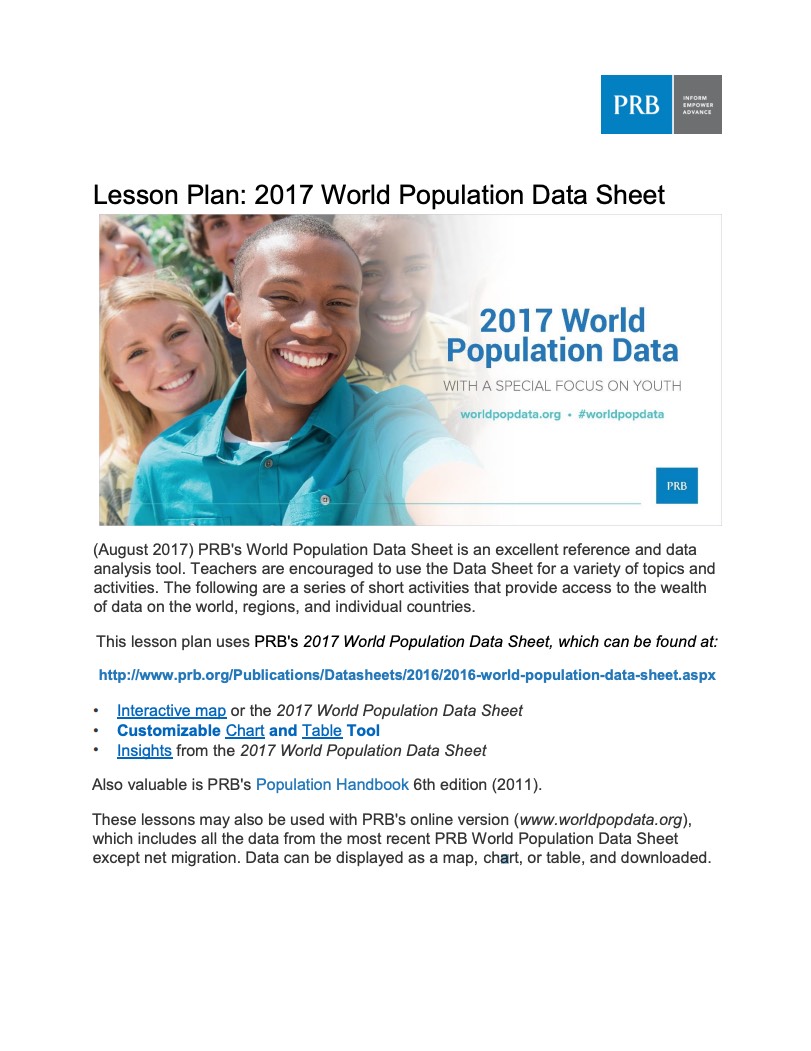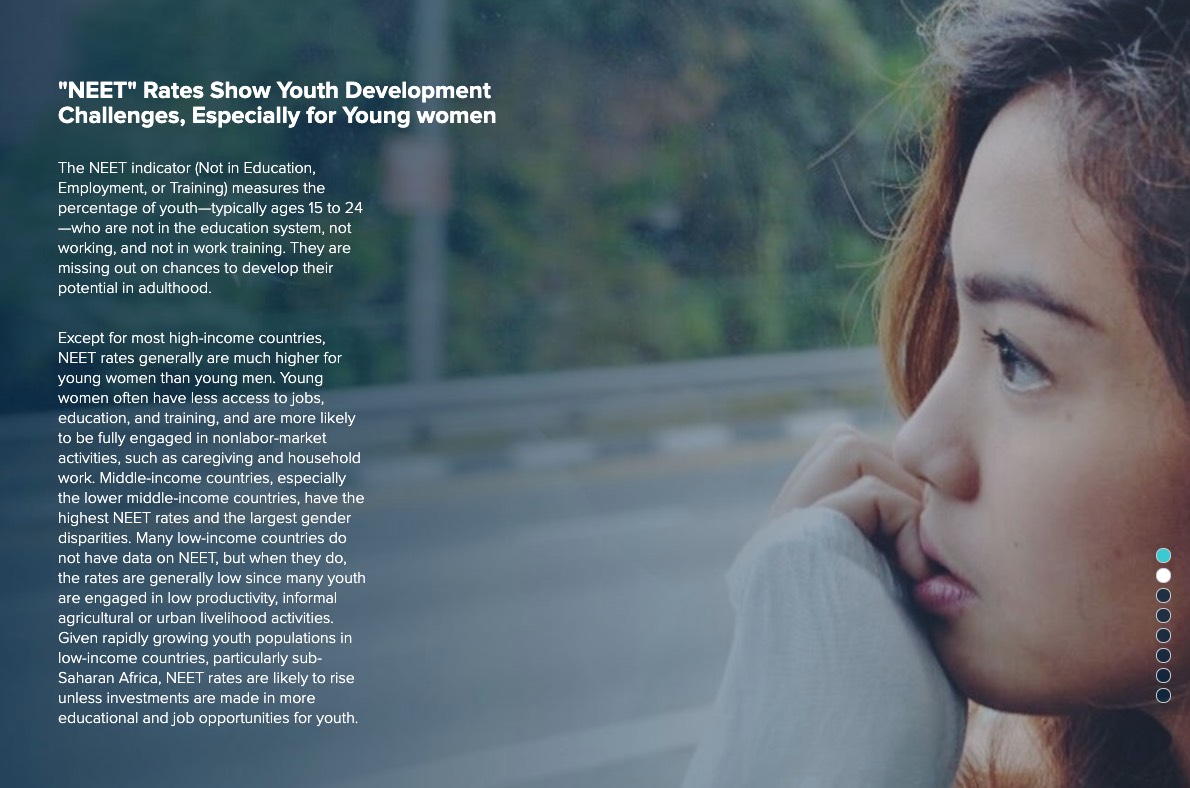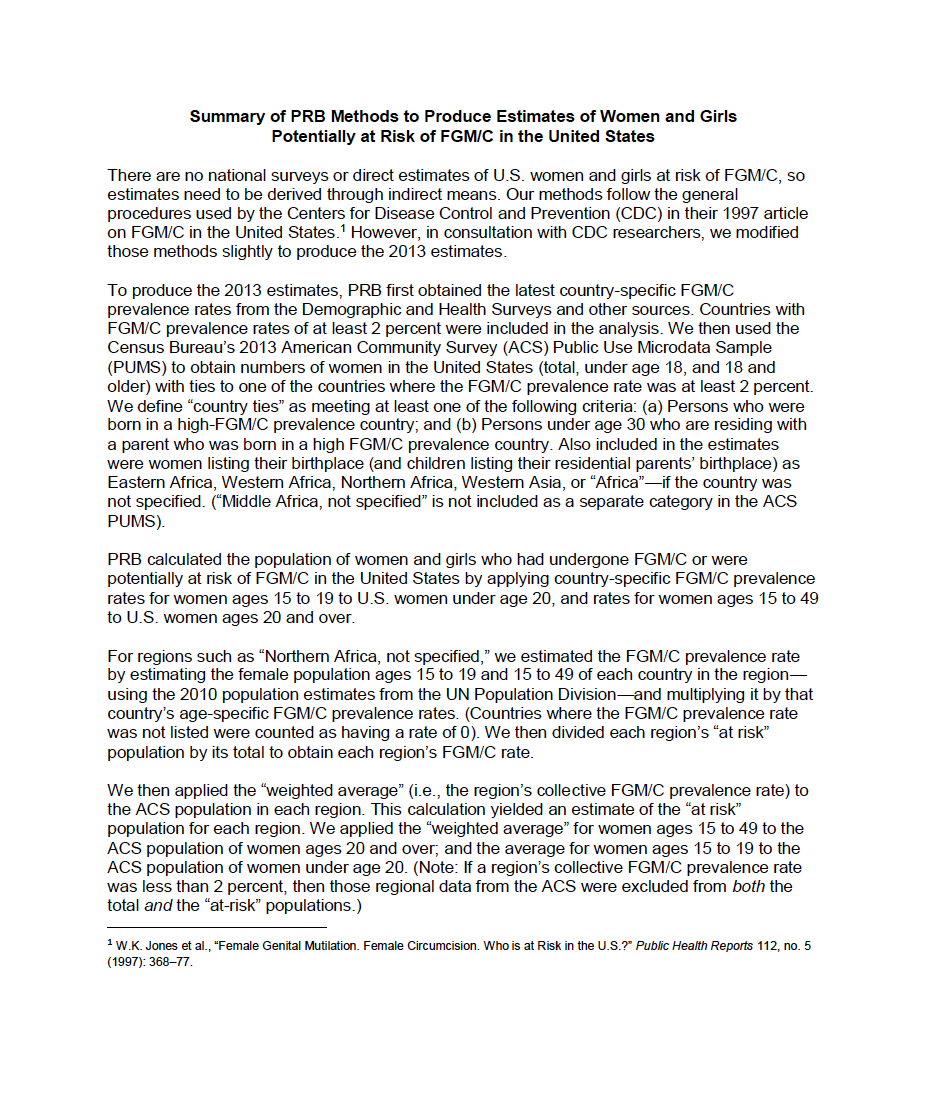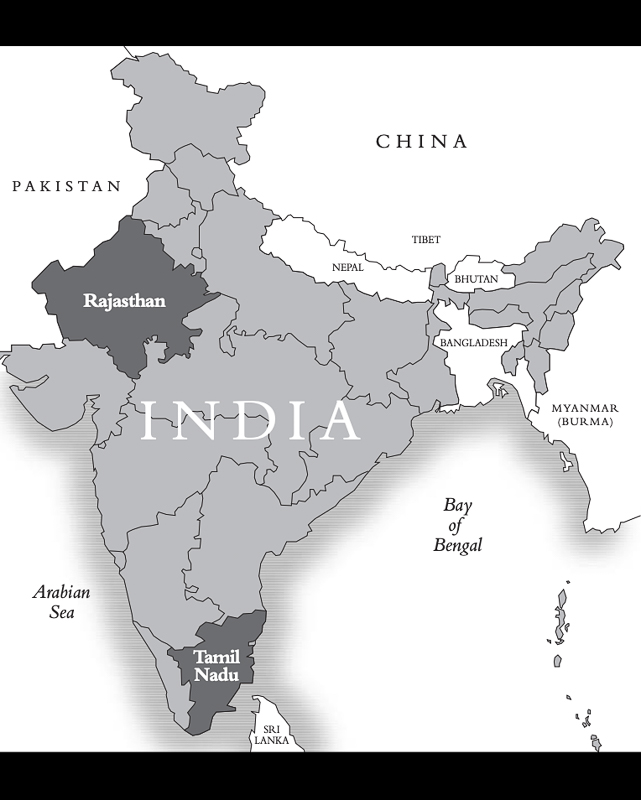Project: PACE: Policy, Advocacy, and Communication Enhanced for Population and Reproductive Health
488 Search Results Found For : ""


Project: PACE: Policy, Advocacy, and Communication Enhanced for Population and Reproductive Health
2017 Interactive World Population Data Sheet
This year we focus on the state of the world's youth—the 16 percent of the global population between 15 and 24 years old. Explore data and graphical features that illustrate the extent to which youth are poised to become productive adults.

Risk of Female Genital Mutilation/Cutting in the United States, Methodology
Summary of PRB Methods to Produce Estimates of Women and Girls Potentially at Risk of FGM/C in the United States
Changes in Fertility Rates Among Muslims in India, Pakistan, and Bangladesh
(2009) The number of Muslims worldwide is projected to grow over the next decade to reach one-quarter of the world's population, largely because of higher fertility among Muslim populations.

Reproductive Health in Policy and Practice: India
(September 1998) The primary objective of this study was to review whether and how central elements of the 1994 International Conference on Population and Development are being translated into action in India.
Delivery Care Is Key for Maternal Survival: A Story of Two States in Nigeria
Yemi Omoshola, a woman from Lagos State, in southwestern Nigeria, needed blood desperately. Her doctor's attempts to induce delivery of her overdue baby had caused excessive bleeding. Unfortunately, the hospital had no blood bank. While her husband searched for blood, Mrs. Omoshola lost consciousness and died.
